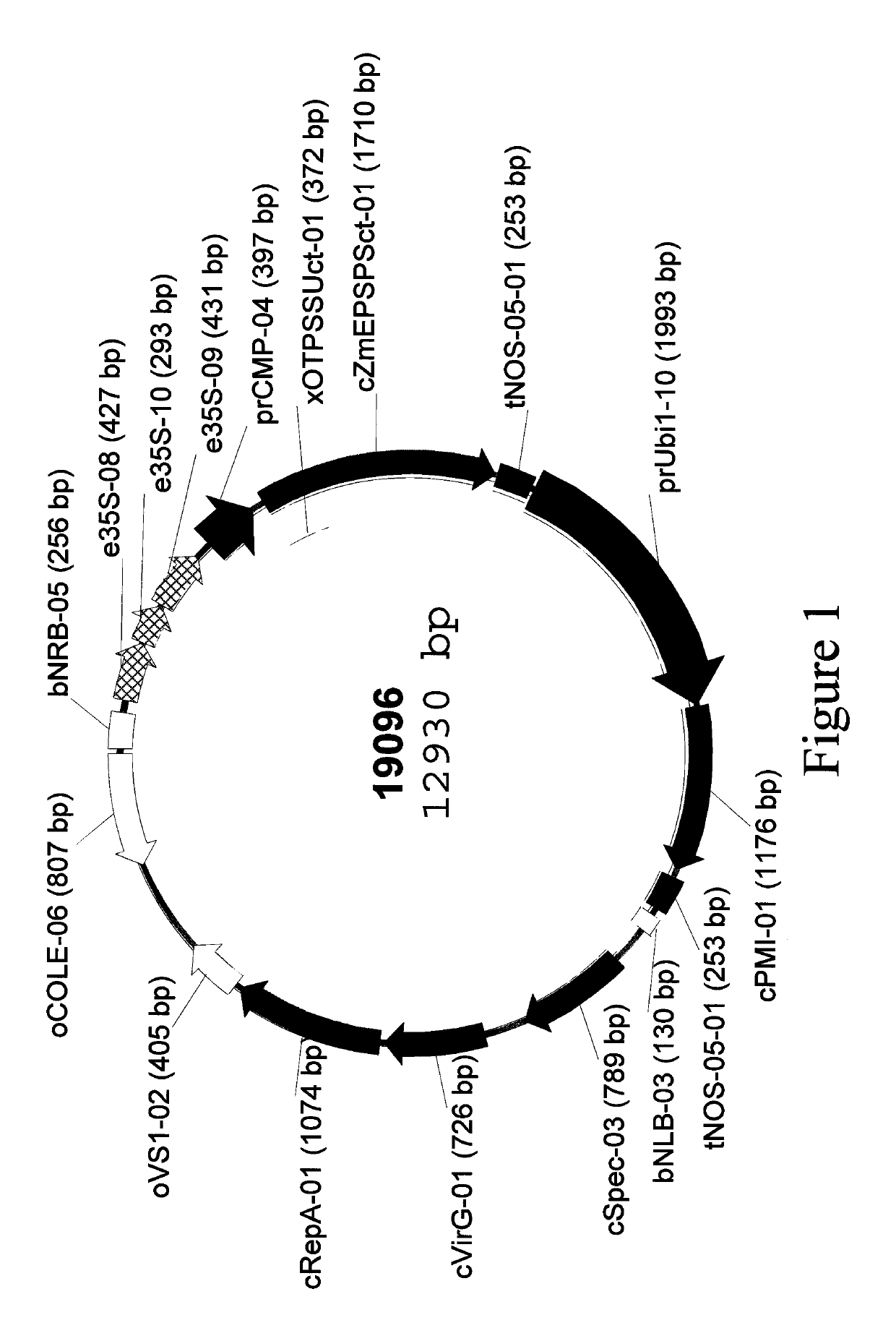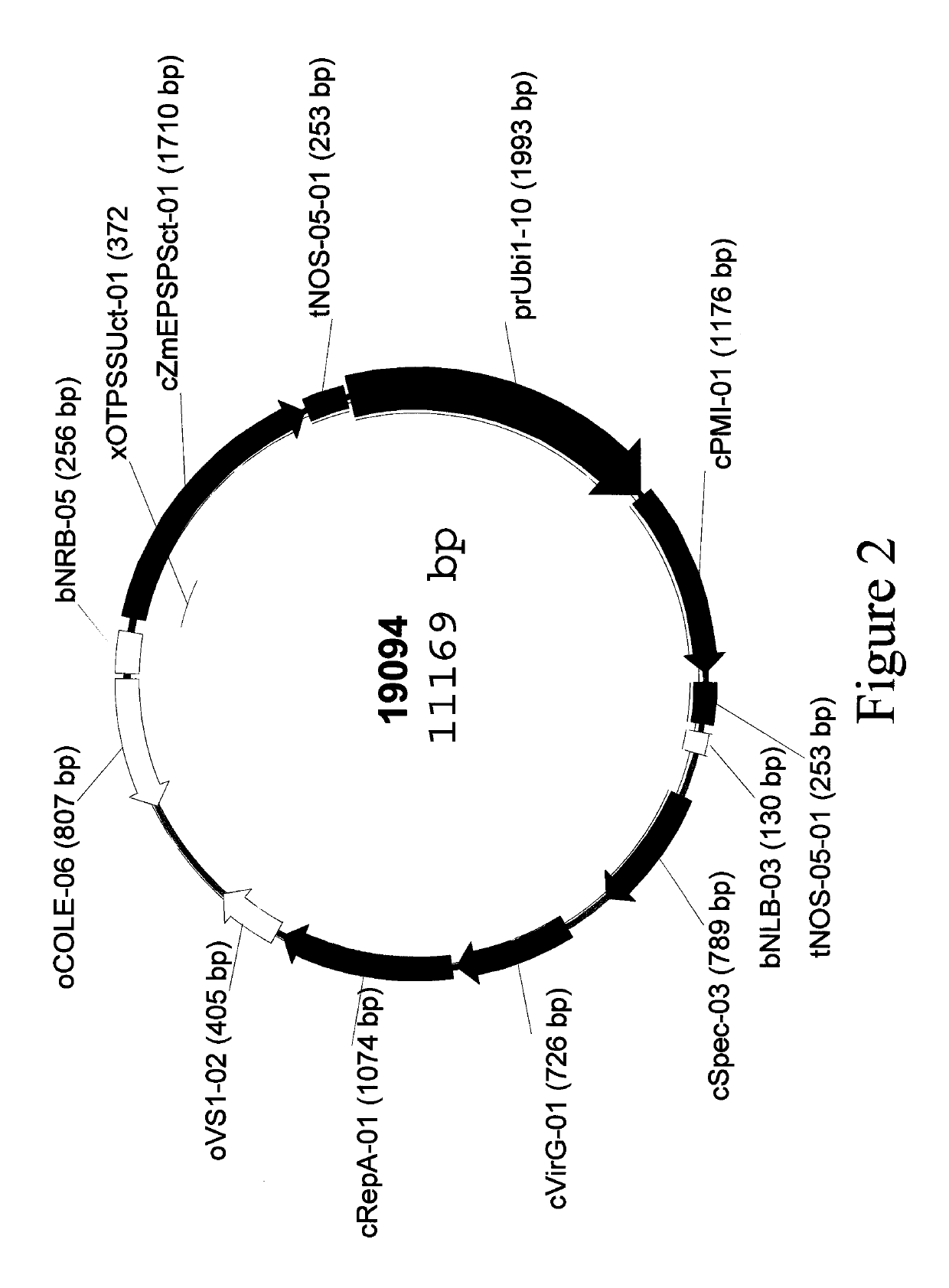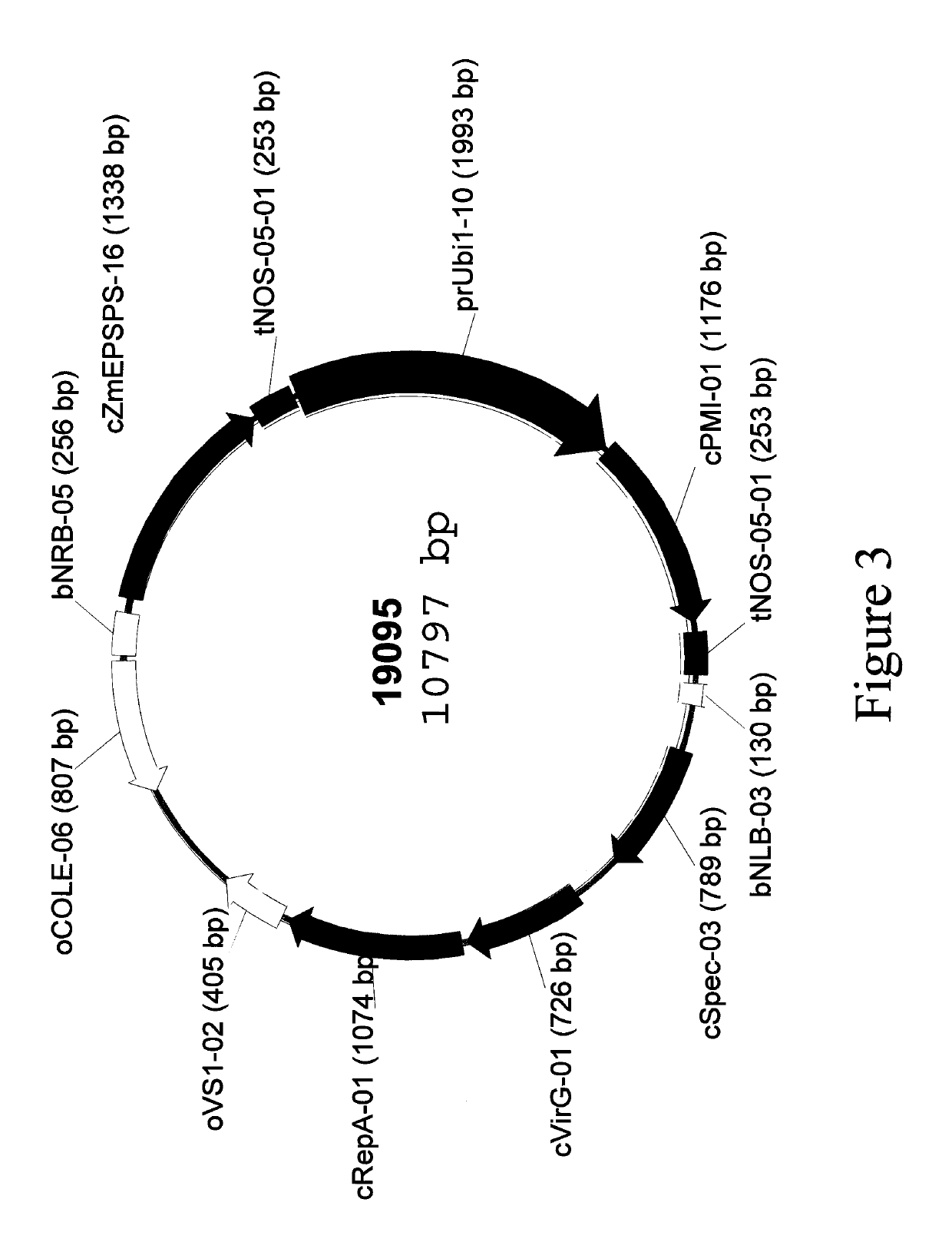Methods for generating transgenic plants
a technology of transgenic plants and methods, applied in the field of plant biotechnology, to achieve the effect of reducing survival rates, reducing survival rates, and reducing survival rates
- Summary
- Abstract
- Description
- Claims
- Application Information
AI Technical Summary
Benefits of technology
Problems solved by technology
Method used
Image
Examples
example 1
s Triggering RNA-Dependent Silencing of Essential Native Gene Increases the Number of Low Copy Transgenic Events
[0117]For this example, constructs 19096, 19094, 19095, 19120, and 19122 (FIGS. 1, 2, 3, 4, and 5, respectively) were synthesized. Construct 19096 consists of two expression cassettes flanked by right and left borders. The first cassette (SEQ ID NO: 1), comprises a synthetic codon engineered maize double mutant EPSPS (ZmEPSPS or cZmEPSPSct-01) operably linked to a sunflower / maize plastid transit peptide which comprises the sunflower rubisco small subunit transit peptide (xOTPSSUct-01; U.S. Pat. No. 6,040,497) under the control of three 35S enhancers (e35S), the CMP promoter sequence (prCMP-04) and further operably linked to the nopaline synthase (NOS) 3′ end transcription termination and polyadenylation, or terminator, sequence (tNOS, or tNOS-05-01). The second cassette comprises a maize ubiquitin promoter (prUbi1-10) (Christensen et al, 1992, Plant Mol Biol 18: 675) opera...
example 2
s Containing OsMADS1 Promoter and 5′ Genomic Sequence Increase the Number of Low Copy Transgenic Events
[0128]For this example, constructs 20070 and 21099 (FIGS. 6 and 7, respectively) were produced. Construct 20070 comprises two expression cassettes between the right and left borders of the T-DNA. The first cassette contains a 7.9 kb promoter based on the OsMADS1 gene, from Oryza sativa (GenBank accession AF204063; U.S. Pat. No. 8,129,588). This promoter construct, prOsMADS1-05 (SEQ ID NO: 6), comprises the OsMADS1 promoter, operably linked to the 5′-nontranscribed sequence, exon 1, intron 1 and part of exon 2 of the OsMADS 1 gene. Exon 1 contains a mutated ΔTG to ACA so that no translation initiates from the OsMADS1 exon 1. prOsMADS1-05 contains a maize optimized Kozak sequence at its 3′ end to promote translation of a coding sequence. In construct 20070, prOsMADS1-05 is operably linked at the 5′ end to enhancers from Figwort mosaic virus (eFMV-03) and the 35S promoter of Cauliflow...
PUM
| Property | Measurement | Unit |
|---|---|---|
| length | aaaaa | aaaaa |
| size | aaaaa | aaaaa |
| temperature | aaaaa | aaaaa |
Abstract
Description
Claims
Application Information
 Login to View More
Login to View More - R&D
- Intellectual Property
- Life Sciences
- Materials
- Tech Scout
- Unparalleled Data Quality
- Higher Quality Content
- 60% Fewer Hallucinations
Browse by: Latest US Patents, China's latest patents, Technical Efficacy Thesaurus, Application Domain, Technology Topic, Popular Technical Reports.
© 2025 PatSnap. All rights reserved.Legal|Privacy policy|Modern Slavery Act Transparency Statement|Sitemap|About US| Contact US: help@patsnap.com



